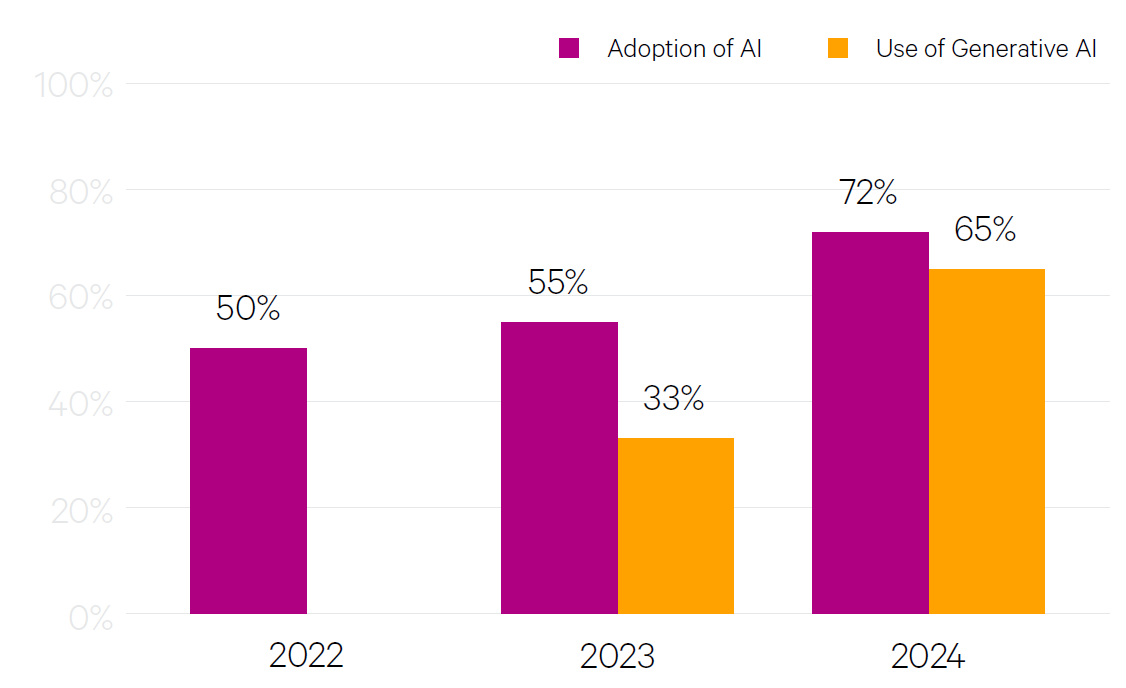Vertiv's five imperatives offer a strategic roadmap to tackle the challenges of AI integration.
The surge in artificial intelligence (AI) usage has introduced new infrastructure demands, prompting a shift in long-standing design strategies and processes. Drawing on its extensive experience in helping enterprises and data centers navigate technological changes, Vertiv has developed AI-specific design principles and strategic imperatives to address the unique workload and density requirements of AI.
The eBook, "Strategic imperatives: Prioritizing your AI transformation", discusses five key principles that serve as foundational blocks for building, reinforcing, or retrofitting data centers for AI. Industries and businesses can use these insights to guide their current efforts in modernizing their legacy infrastructure and consider them as a roadmap for future deployments, implementations, and upgrades.
AI's impact on the data center
AI encompasses various subfields and technologies, including machine learning, natural language processing, computer vision, robotics, expert systems, and generative AI. These technologies are interconnected and often build upon each other to enable more advanced AI systems. The release of publicly accessible generative AI (GenAI) products has accelerated AI adoption in a way other types had not.
This rapid adoption puts significant pressure on data center operators, who are now tasked with making critical decisions to support their organizations' AI initiatives today and in the future. The strategies and spending decisions these leaders implement will be critical in the evolution of data centers in the decades ahead.
One of the most pressing challenges is the dramatic increase in energy consumption driven by AI workloads. Research from International Energy Agency (IEA) indicates that global electricity demand from data centers is expected to double between 2022 and 2026. Additionally, a study by Goldman Sachs suggests that data centers could account for up to 21% of global energy demand by 2030. This surge in energy usage underscores the need for innovative solutions to ensure efficiency in data center operations.

Figure 1. Percentage of organizations that have adopted AI in at least one function. The use of generative AI almost doubled between 2023 and 2024. Source: McKinsey.
The five Vertiv imperatives for AI data centers
Vertiv identified five key imperatives that are crucial for data center success in the age of AI: transformation, efficiency, speed, confidence, and future readiness. These imperatives provide a roadmap for data center operators to navigate the complexities of AI and deliver scalable solutions across different enterprise verticals.
Below is an overview of the imperatives that the ebook discusses in detail, as well as how this is reflected in the major industries that have been and can further benefit from the outcomes of AI use and infrastructure changes: healthcare, manufacturing, government, and banking and financial services.
- Be transformative: This imperative emphasizes the need for data centers to adopt new technologies and design strategies that can handle the latest advancements and demands. For instance, AI workloads are considerably more power-intensive and physically denser than traditional data center workloads, requiring new approaches to heat removal and power management.
- Be efficient: This imperative focuses on streamlining operations to achieve maximum productivity with minimal waste. AI can significantly improve organizational efficiency by automating routine processes, speeding up the analysis of large data sets, and aligning the forecasting and skillset training required for processing the data collected.
- Be first: This imperative highlights the importance of being first to market AI-powered solutions, creating a competitive advantage. An integrated approach to critical infrastructure that brings together power and cooling design can mitigate risk and accelerate deployment speed.
- Be confident: This imperative emphasizes the importance of reliability and security in all aspects of operations. Thoughtful planning can help enterprises have the right data center infrastructure in place to support their AI strategy.
- Be future-ready: This imperative encourages a proactive approach, enabling data centers to always be prepared for what lies ahead. The density and performance of AI platforms are growing rapidly, and today's high-density racks will soon be eclipsed by even higher-density racks.
Optimize data centers for the AI-driven future
By embracing Vertiv's five imperatives and rethinking the infrastructure design, enterprises and data centers can navigate the complexities of AI and deliver scalable solutions that align with business strategies and their respective goals for growth and future. These principles provide a comprehensive framework for transforming data center operations, driving efficiency, accelerating deployment, building confidence, and preparing for future demands. As AI continues to evolve, data centers that adopt these imperatives will be well-positioned to thrive in a rapidly changing technological landscape.
Learn how AI is shaping your industry
AI in Financial Services: Calculating the benefits of owned vs outsourced data centers
AI in Government: Public service innovations and global initiatives
AI in Healthcare: Why the potential to save lives outweighs the perceived threats
AI in Manufacturing: Addressing integration and infrastructure readiness


